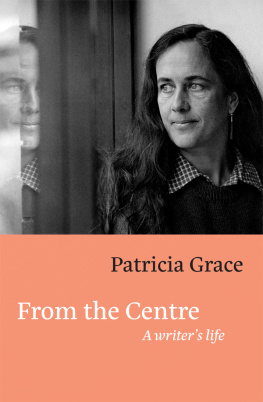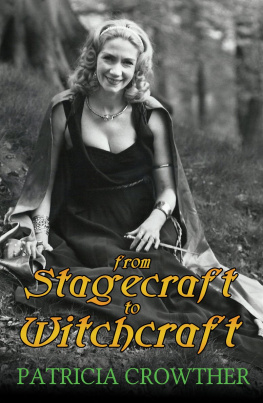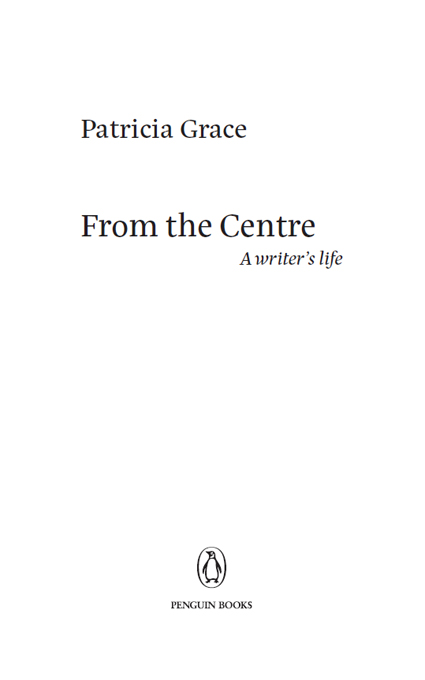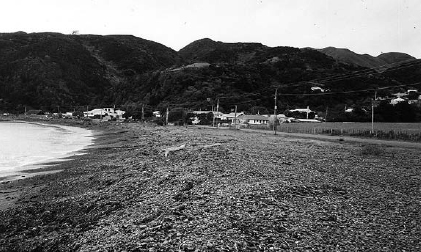Distinguished Companion of the New Zealand Order of Merit for Services to Literature (2007)
Certificate of Honor from Senate State of Hawaii for Contributions to Literature (2006)
1.
IM SITTING BY A BIG WINDOW IN THE LOUNGE, A SPOT chosen because its where the suns coming in. Ive always preferred to write in the living areas of the house: at the dining table, or, as now, notebook propped on my lap, pencil in hand. The pencil is grip plus, propelling, 2B lead. The notebook? Hard cover, two hundred pages, mostly used. Theres an office elsewhere in the house. Its where I keep stuff, print out, copy, scan but for pencil and paper, typing up, I like light, movement of trees, life going on, lawnmowers (but distant), kids, birds. I believe it gives energy and toughens concentration.
It is August 2017. Outside the window is a priri tree, grown from one of four plants purchased by my daughter thirty years ago at a market day. Two of the four are growing on our marae tea, a short walk from here, and another near where my daughter was living at the time.
This afternoon the tree is inhabited by small birds, mainly tauhou the newcomer white eye rings making them easy to identify. Along with finch varieties, they angle about, dipping into and picking at the cupped, narrow pink flowers that, with rims out-turned, resemble mini champagne flutes.
Three t were here this morning, on overdrive, leaping about and feeding, flying out and back, out and back before leaving altogether. They havent gone far. I can hear them in the phutukawa and t kuka out front of the big house, low-and-high-noting, creaking and belling. Theyll be lording it out there, warning off all non-t comers.
Kerer havent visited for a few months. Theres nothing to attract them at present, but I notice there are bunches of green berries forming on the priri. When these ripen, the kerer will come, plunging through the leaves, rocking the branches, departing and returning, heavy and noisy as they fly.
The big window is a feature of this small house, which I moved into three months ago. Its situated behind the big house, which is the one Dick and I built when we moved to Hongoeka Bay more than forty years ago. The eldest of our children was fourteen at the time and the youngest four.
Hongoeka is a unique place in several ways. It is the last remnant of three Ngti Toa reserves that still remain in Ngti Toa hands. These reserves (10,000 acres of land) had, in the words of the Porirua Deed, 1847, been set aside for the perpetual benefit of Ngti Toa following the acquisition of Porirua by the Crown in that same year.
The stony shores of Hongoeka Bay, residential area. Marae complex at far end. FAMILY ARCHIVES
It was in 1865 that the government expunged tribal ownership of Mori lands to better facilitate Crown pickings, and it was during this era that Hongoeka titles were taken out in the names of six of our male tpuna. Though the Porirua Deed did little to protect the reserves, and the land dwindled over time owing to dishonest dealings, tax demands, impoverishment of Mori, and new parliamentary Acts and laws, Hongoeka, at 554 acres, remains the largest area of Mori-owned land in the district of Wellington this despite efforts by councils and different companies to obtain it for various purposes.
Ngti Toas traditional home was in Kwhia, where the Tainui waka originally made landfall. In 1820, because of ongoing conflict, and under threat of annihilation by more numerous traditional enemies, Ngti Toa left Kwhia their centuries-old home. Under the leadership of war strategist Te Rauparaha, safe passage out of Kwhia was negotiated, and thus began an arduous, dangerous and eventful trek in search of new territories. Many lives were lost. The whole journey from Kwhia to Te Moana o Raukawa (Cooks Strait) was named Te Heke-mai-i-raro.
By 1840 Ngti Toa, by conquest, had become the dominant iwi on the Kpiti Coast. They had also conquered territory in the South Island, and controlled large areas on both sides of Te Moana o Raukawa from their island fortress of Kpiti. After European settlers arrived, Ngti Toa was seen as a threat to the Crown, whose ambition was land acquisition.
So, in 1846, by order of Governor Grey, Te Rauparaha was taken from his principal residence, which was situated a short distance about a half kilometre from where I live. He was held captive aboard HMS Calliope for ten months, then imprisoned in Auckland without trial for an additional eight months. It was during this period, with Te Rauparaha being held to ransom by Grey, that most of Ngti Toas land was acquired by the Crown as, under duress, Ngti Toa negotiated his release.














